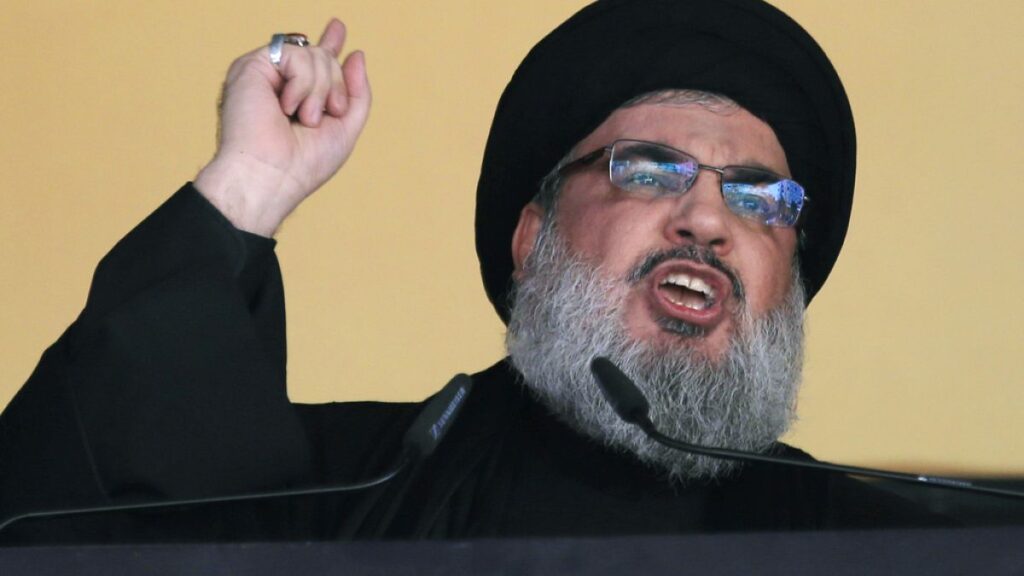The IDF spokesperson announced that the Israeli army killed the leader of the Hezbollah terrorist organization on Friday as well as Ali Karchi, the commander of Hezbollah’s southern front, and other commanders of the militant group.
Hassan Nasrallah has led the Lebanese militant group for the past three decades, transforming it into one of the most powerful paramilitary groups in the Middle East.
Under the leadership of Mr. Nasrallah, 64, Hezbollah has fought wars against Israel and taken part in the conflict in neighboring Syria, helping to tip the balance of power in favor of President Bashar Assad.
A keen strategist, Mr. Nasrallah transformed Hezbollah into Israel’s archenemy, forging alliances with Shiite religious leaders in Iran and Palestinian militant groups such as Hamas.
Idolized by his Lebanese Shiite supporters and respected by millions of others across the Arab and Islamic world, Mr. Nasrallah bears the title of sayyidan honor believed to signify the Shiite cleric’s lineage dating back to the Prophet Muhammad, the founder of Islam.
A fiery orator considered an extremist in the United States and much of the West, he is also seen as a pragmatist compared to the militants who dominated Hezbollah after its founding in 1982, during Lebanon’s civil war.
Despite the power he wields, Nasrallah has lived largely in hiding for fear of Israeli assassination.
Rise to power
Born in 1960 to a poor Shiite family in the northern Beirut suburb of Sharshabouk, Nasrallah was later moved to southern Lebanon. He studied theology and joined the Amal movement, a Shiite political and paramilitary organization, before becoming one of the founders of Hezbollah.
Hezbollah was formed by members of the Iranian Revolutionary Guard who arrived in Lebanon in the summer of 1982 to fight invading Israeli forces. This is the first group that Iran has supported and used as a means of exporting its brand of political Islam.
Nasrallah built a power base while Hezbollah was part of a group of Iranian-backed factions and governments known as the Axis of Resistance.
Two days after the death of its leader, Sayyed Abbas Musawi, 39, in an Israeli helicopter raid in southern Lebanon, Hezbollah chose Nasrallah as secretary general in February 1992.
Five years later, the United States designated Hezbollah a terrorist organization.
Under Nasrallah’s leadership, Hezbollah waged a war of attrition that led to the withdrawal of Israeli troops from southern Lebanon in 2000, after 18 years of occupation. Nasrallah’s eldest son, Hadi, was killed in 1997 while fighting Israeli forces.
After the Israeli withdrawal from South Lebanon in 2000, Nasrallah became an icon in Lebanon and the Arab world. His messages were broadcast on Hezbollah’s radio and satellite television channel.
This status was further cemented when, in 2006, Hezbollah fought Israel to a stalemate during the 34-day war.
When civil war broke out in Syria in 2011, Hezbollah fighters rushed in, siding with Assad’s forces, even as Hezbollah’s popularity plummeted as the Arab world ostracized Assad.
Hezbollah joins Israel-Hamas war
A day after the start of the war between Israel and Hamas, on October 7, Hezbollah began attacking Israeli military posts along the border, calling them a “backup front” for Gaza.
In speeches he has given throughout the conflict, Mr. Nasrallah has claimed that Hezbollah’s cross-border strikes have distracted Israeli forces that otherwise would have focused on Hamas in Gaza, and he has insisted that that Hezbollah would not stop its attacks against Israel until a ceasefire was reached in Gaza.
Mr. Nasrallah maintained a defiant tone, even as tensions rose significantly in recent weeks with Israel’s announcement of a new phase of the conflict aimed at pushing Hezbollah from the border to allow thousands of people displaced people from northern Israel to return home.
Israel launched strikes killing senior military commanders of the group and was held responsible for the explosion of thousands of communications devices (pagers, walkie-talkies), mainly used by Hezbollah members, which killed 37 people and injured thousands more.


